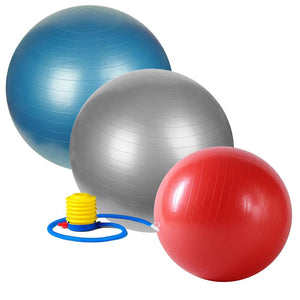We all know the importance of oxygen; without it, we would not be able to live or function normally. When a person inhales, oxygen is delivered to our red blood cells and pumped throughout the body’s circulatory system by the heart. Inhalation is what supplies this vital resource to our cells. As red blood cells circulate throughout the body, they carry oxygen from the lungs to the other cells.(1)
The lungs also help move carbon dioxide, a waste product from cellular respiration, back to the lungs to exhale. If too much carbon dioxide is present in the blood, it reacts with water in the bloodstream, making it slightly acidic. The change in pH is then detected by receptors that excite neurons. Once the neurons are excited, they signal to the lungs, which then make the person exhale, releasing the carbon dioxide and restoring the balance of gases.(1)
History of Box Breathing & Breath Control Exercises
For hundreds of years, people have known that breathing is essential for the survival of many species. Breath control has been used to modulate brain activity for over 5,000 years. Yoga practitioners and other forms of meditation have been consciously altering their breathing patterns and noticing psychological benefits since before modern science found connections between the nervous system and the lungs.(1)
Past research into this neural respiratory relationship has focused on how the brain signals to the lungs. Recent research, however, has demonstrated that breathing may also signal back to the brain, activating different areas with different breath patterns. This can better explain the calming effects of yoga and meditation, the function of hyperventilating during anxiety attacks, and even give clues about how to treat poorly understood phenomena like Sudden Infant Death Syndrome.(1)
Benefits of Breathing
Recently, it was discovered that breathing rate controls the sensitivity of these receptors. This means the difference in breathing, as in high versus low-stress situations, can regulate the strength of the signals sent from the heart to the brain and, therefore, also adjust the resultant neural activity that controls the emotional state. They also found that emotion processing time was faster and more accurate when breathing through the nose rather than the mouth. There was also a significant improvement in the ability to form and recall memories if participants breathed through their nose and mouth instead of their mouth only.(1)
In one study, participants had their respiratory, cardiovascular, and neural activity measured in a stressed (low oxygen) versus non-stressed (adequate oxygen) state. The state resulted in increased breathing rate (hyperventilation), decreased pressure-receptor sensitivity, and increased activity in brain structures strongly implicated in fear and anxiety responses. These areas are crucial in processing and reacting appropriately to stressful situations. For example, the amygdala shows increased activity when people try to process frightening situations; the visual cortices activate in response to perceived threats, possibly as a way to increase threat-sensing abilities; and early activation of the motor cortex is seen in people preparing to perform a physical action.(1)
What is Box Breathing?
Some of you may have heard the term before “Box Breathing”; others may not have. It’s a type of breathing exercise that is very helpful for relaxation. It helps with stress management and can be implemented before, during, and/or after stressful experiences or when dealing with anxiety. Not only is it a breathing exercise, but it’s also a great visualization tool.
I first learned about Box Breathing about eight years ago from my best friend from high school. He had just finished S.E.R.E. Training on his way to becoming a Navy Seal, and Box Breathing was the breathing exercise/technique they taught them all (S.E.R.E. stands for “Survival, Evasion, Resistance, Escape” Training).
Box Breathing Technique
Box Breathing uses four simple steps. When you do this exercise, it's crucial that you visualize the making of all four sides and that they are equal-sided. Typically, each step of this exercise is done with a 4-second count, but you may be accommodating depending on the individual, performing each step with a 2-second count.
- Step One: Inhale in through the nose for a count of 4 while you visualize one side of the box being made within the count of 4.
- Step Two: Hold your breath for a count of 4 as you visualize the top of your box being made within those 4 seconds.
- Step Three: Exhale out for a count of 4 as you visualize the second side of your box being made.
- Step Four: Hold your breath for a count of 4 and visualize the bottom of your box as it is completed.

Why Should Everyone Practice Box Breathing/Breathing Exercises?
Mastering Box Breathing and other conscious breathing exercises have several benefits that can change your life. You will naturally experience more comfort, pleasure, and mental and physical ease in different aspects of life. It will help increase your internal awareness as well as your situational awareness, along with your health, well-being, and performance will be enhanced. Breathwork will give you complete relaxation with awareness, which helps make the secret recipe that can lead to the most empowering and enlightening benefits. There’s a reason why it's an ancient practice that has been used for thousands of years.
(1) Take a Breath: The Effects of Respiration on Brain Activity, Journal, 2020. https://greymattersjournal.org/take-a-breath-the-effect-of-respiration-on-brain-activity/ Accessed 14 December, 2022


























Add Your Name & Email
Please enter your name and email to continue.We won’t display your email publicly.